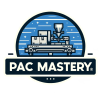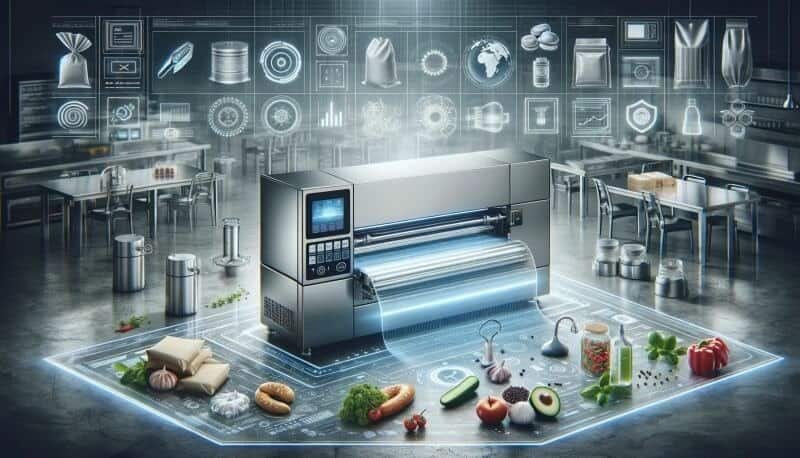At PacMastery, we're dedicated to revolutionizing the packing machinery industry with innovative solutions that enhance efficiency, reliability, and quality. Understanding the pivotal role of commercial vacuum packing machines in the food packaging sector is essential for businesses aiming to optimize their operations. This essay delves into the various aspects of vacuum packing technology, providing key insights to aid in the selection of the right machinery for your packaging needs.
Key Takeaways Table
| Key Aspect | Details |
|---|---|
| Machine Types | Chamber Vacuum Sealers, External Vacuum Sealers |
| Ideal Use Cases | Food preservation, extending shelf life, enhancing food safety |
| Selection Criteria | Seal bar length, pump type (oil vs. dry pump), material durability, wattage |
| Featured Products | Visit our product page for detailed specifications |
| Operational Efficiency | Maintenance tips, optimizing vacuum sealing processes |
| Future Trends | Smart technologies, automation in vacuum packing |
| PacMastery Commitment | Innovation, quality, customer satisfaction, sustainability |
Introduction
The commercial food industry continuously seeks methods to enhance product safety, extend shelf life, and streamline operations. Commercial vacuum packing machines stand at the forefront of this endeavor, offering a solution that not only preserves food quality but also significantly improves packaging efficiency.
Understanding Commercial Vacuum Packing Machines
Definition and Basic Operation: A commercial vacuum packing machine is a device that removes air from the packaging before sealing it. This process reduces oxygen levels, slowing down food deterioration, preventing freezer burn, and extending shelf life.
Benefits of Vacuum Packing: The primary advantages include:
- Extended Shelf Life: Food products last longer, reducing waste and improving inventory management.
- Enhanced Food Safety: Minimized oxygen levels reduce the risk of aerobic bacteria and mold growth.
- Operational Efficiency: Faster packaging processes and reduced packaging material costs.
Types of Commercial Vacuum Packing Machines
There are two main types of vacuum packing machines, each suitable for different packaging needs:
- Chamber Vacuum Sealers: Ideal for high-volume operations and liquids, as the entire packaging process occurs inside the chamber, ensuring even pressure and sealing.
- External Vacuum Sealers: Suitable for low to moderate-volume packaging and solid foods, these machines are more compact and cost-effective.
Key Features to Consider
When selecting a vacuum packing machine, several factors must be considered to ensure it meets your business's specific needs:
- Seal Bar Length: Determines the maximum size of the package that can be sealed.
- Pump Type: Oil pumps are durable for continuous use, while dry pumps offer convenience with less maintenance.
- Material and Durability: Stainless steel machines offer longevity and are easier to clean, crucial for food safety.
- Wattage and Efficiency: Higher-wattage machines can handle more robust operations but may consume more energy.
Top Commercial Vacuum Packing Machines Reviewed
We've reviewed several machines to help you find the best fit for your business, including options for different scales of operations and specific uses. Detailed reviews can be found on our comprehensive guide to vacuum packaging machines page.
Incorporating Customer Insights
Hearing from businesses that have successfully integrated vacuum packing machines into their operations provides valuable insights. From extending the shelf life of meat products to efficiently packaging liquids without spillage, the versatility and efficiency of these machines are evident. Real-world applications and success stories are further explored in our innovative solutions section.
Operational Tips for Maximum Efficiency
To ensure that your commercial vacuum packing machine operates at peak efficiency, maintaining and optimizing your equipment is key. Here are some operational tips:
- Regular Maintenance: Adhere to the manufacturer's maintenance schedule to prevent unexpected breakdowns. Key areas include seal bars, pumps, and vacuum chambers.
- Cleaning Procedures: Implement daily cleaning protocols to maintain hygiene standards, especially for machines that handle food products. Stainless steel models offer the advantage of being easier to clean and disinfect.
- Optimizing Vacuum Sealing Processes: Train staff on best practices for loading and operating machines to maximize throughput and minimize waste. Understanding the machine's settings and adjustments can lead to better seal quality and preservation of different food types.
Future Trends in Vacuum Packing Technology
The future of vacuum packing technology is promising, with innovations aimed at increasing sustainability, efficiency, and integration into smart manufacturing environments:
- Smart Technologies: IoT-enabled vacuum packing machines that provide real-time data on operations, maintenance needs, and efficiency metrics.
- Automation: Advanced robotics and AI to automate the packing process, reducing labor costs and increasing precision.
- Sustainability: Developments in eco-friendly packaging materials that work seamlessly with vacuum packing technology, reducing the environmental impact.
Conclusion
Choosing the right commercial vacuum packing machine can dramatically improve your food packaging operations, contributing to product quality, operational efficiency, and sustainability. By considering the types of machines available, and key features, and following operational best practices, businesses can make informed decisions that align with their goals.
At PacMastery, our commitment to innovation, quality, and customer satisfaction drives us to provide advanced solutions that meet the evolving needs of the packaging industry. Explore our range of vacuum packing machines and discover how we can help you enhance your packaging process.



